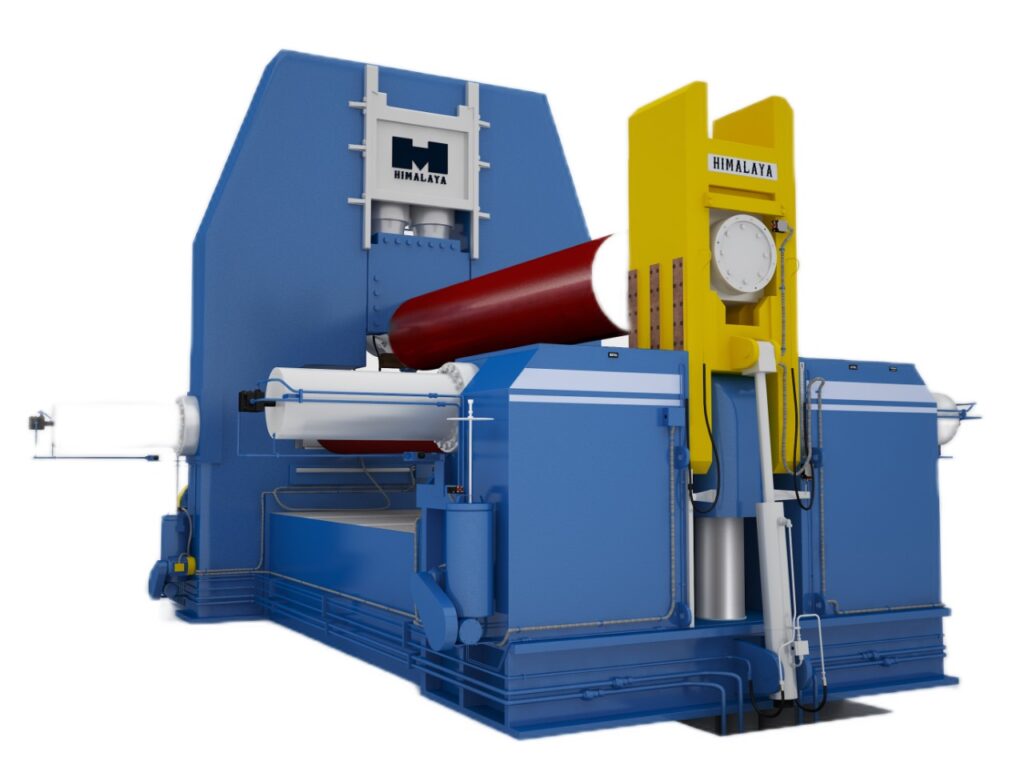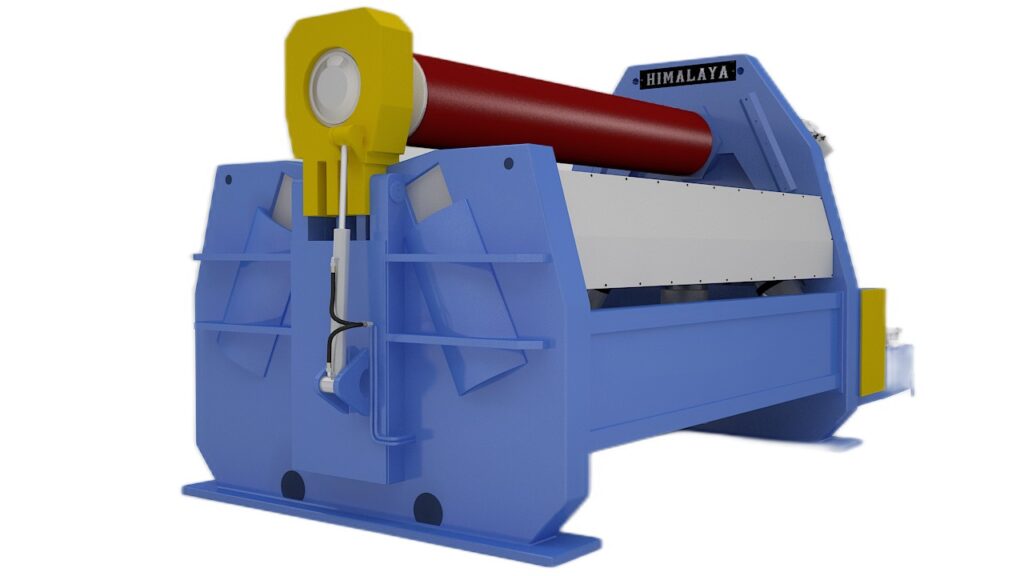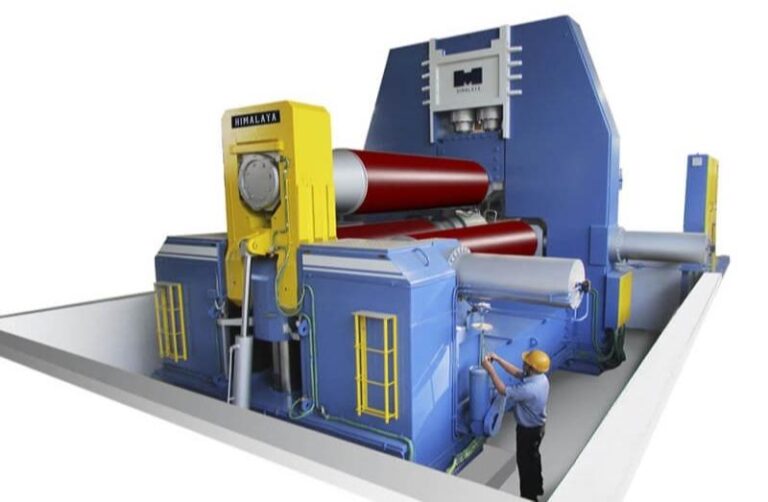Efficiency plays a role, in today’s paced manufacturing industry, where speed is of the essence. One technology that has truly transformed production processes is the plate rolling machine. These powerful machines have revolutionized the way metal sheets are shaped into forms providing advantages for businesses.
In this article, we will explore how plate rolling machines enhance production efficiency, including their benefits, automation capabilities factors to consider when choosing one, and the common challenges encountered in their operations. Additionally, we will share real-life success stories to illustrate the impact these machines have made. So let’s dive in!
Exploring the Various Types of Plate Rolling Machines
Plate rolling machines come in types that cater to applications and production requirements. For example, there are three roll machines, four roll machines, and variable geometry machines. Three-roll machines are well suited for bending plates with geometry while four-roll machines offer versatility by handling both symmetrical and asymmetrical shapes effortlessly. On the other hand variable geometry machines provide flexibility by allowing adjustments to the distance between rolls—making them ideal, for bending operations.

When it comes to three roll machines they are designed with three rolls arranged in a triangular formation. The top roll applies pressure, to the plate while the two bottom rolls rotate in directions to achieve the desired bend. These machines are commonly used in industries like shipbuilding, construction, and metal fabrication where symmetrical bending is frequently needed.
On the other hand, four-roll machines offer benefits in terms of versatility and efficiency. They consist of two rolls and two top rolls that can be adjusted both horizontally and vertically. This provides control over the bending process making it easier to achieve consistent results. Four-roll machines are especially suitable for bending plates with shapes such as cones or ellipses since they can handle both asymmetrical bends effortlessly.
Variable geometry machines offer flexibility in plate rolling as their name suggests. These machines have rolls that can be moved horizontally vertically and even diagonally to control the bending process. They excel in applications that require bends such, as curved staircases, architectural structures, or made parts.
Adjusting the space, between the rolls is a feature of geometry machines making them capable of handling plates with varying thicknesses. This versatility makes them a popular choice for a range of projects.
When selecting the plate rolling machine several factors need to be considered. These include the desired output, sheet thickness, material properties, and budget constraints. Having the machine not only ensures smoother production but also minimizes material waste and rework leading to increased efficiency. By understanding the types of plate rolling machines and their capabilities manufacturers can make decisions that align with their specific needs.
Benefits of Using Plate Rolling Machines in Production Processes
The benefits of incorporating plate-rolling machines into production processes are undeniable. These machines offer advantages that directly contribute to improved efficiency and productivity. Firstly they save time by eliminating labor bending processes.
Plate rolling machines can quickly and accurately shape metal sheets according to desired specifications reducing lead times and expediting project completion. Additionally, these machines deliver precise results ensuring uniformity, in the products.
Furthermore, plate-rolling machines enhance material utilization by minimizing wastage. With their ability to bend sheets with deformation excessive trimming becomes unnecessary optimizing material usage.
Not only does this help cut down on costs. It also promotes sustainability by minimizing the environmental impact of production processes.
Moreover, plate plate-rolling machines make it possible to create shapes and curves that would be difficult to achieve. This opens up design opportunities. Expands the range of products that a business can offer leading to higher customer satisfaction and competitiveness, in the market.
The ability to work with materials like steel, aluminum, and stainless steel further adds to the versatility of plate rolling machines and their effectiveness in meeting production needs.
Enhancing Efficiency through Automation in Plate Rolling Machines
To further boost production efficiency plate rolling machines can be integrated with automation technologies. Automation eliminates the need for intervention allowing for uninterrupted and continuous production. By automating tasks such as feeding materials bending processes and unloading products plate rolling machines can significantly reduce cycle times. Increase output.

Automation also improves safety by reducing reliance on labor which is prone to human errors and accidents. With safety features like emergency stop buttons and sensors plate rolling machines ensure a working environment, for operators.
Additionally, automation enables real-time collection and analysis of production data.
This data can help businesses track the performance of their machines identify areas that are causing delays and optimize their production workflows. By gaining insights, into productivity patterns and pinpointing areas for improvement businesses can make informed decisions to enhance efficiency.
Key Factors to Consider When Choosing a Plate Rolling Machine
When choosing a plate rolling machine for your business there are factors you should take into account. Firstly consider the machine capacity, including its bending width and thickness to ensure it aligns with your production requirements. It’s crucial to select a machine that can handle the size and volume of sheets you typically work with.
Secondly, prioritize the reliability and durability of the machine. Look for manufacturers known for producing high-quality machines that can withstand usage over extended periods. This ensures that your investment in the machine will be long-lasting and consistently perform well.
Another important factor is the level of automation and technological advancements offered by the machine. While basic models may be suitable for some businesses others may benefit from features like CNC (Computer Numerical Control) systems, automatic roll adjustment capabilities, and remote monitoring options. These features can streamline operations further increase precision and provide insights, into production processes.
Lastly, evaluating the support provided by the manufacturer after the purchase is crucial. This encompasses factors like part availability, technical assistance, and warranty terms. A dependable manufacturer will offer support and maintenance services ensuring downtime and uninterrupted production.
Common Challenges and Solutions, in Plate Rolling Machine Operations
While plate-rolling machines significantly enhance production efficiency they come with their set of challenges. One common issue encountered in plate rolling machine operations is the risk of distortion and springback. This occurs when the bent sheet returns to its shape after the bending process. To overcome this challenge it is important to consider sheet properties such as elasticity and yield strength along with making tooling and setup adjustments.
Another challenge involves aligning the sheet with the rolls. Misalignment can lead to bending and compromise the quality of the product. By utilizing sensors and laser alignment systems this challenge can be tackled effectively by ensuring positioning and alignment.
Moreover, operators of plate rolling machines need to possess skills and training to operate these machines efficiently. Ongoing training programs along with, understanding manuals and resources can contribute towards enhancing operator proficiency while minimizing errors thereby increasing production efficiency.
Conclusion
Experience unparalleled precision and efficiency with Himalaya Machinery – your trusted partner in cutting-edge machine manufacturing. Our diverse range of machinery, including Plate Bending Machines, Plate Straightening Machines, Plate Leveling Machines, Section Bending Machines, and Special Purpose Machines such as Panel Bending Machines, Shipyard equipment, and other Presses, is meticulously designed to elevate production capabilities for manufacturing companies.
Invest in Himalaya Machinery to unlock a new era of productivity and precision in your operations. Transform the way you manufacture with the reliability and innovation that defines Himalaya Machinery – where excellence meets efficiency. Upgrade your production processes today!









